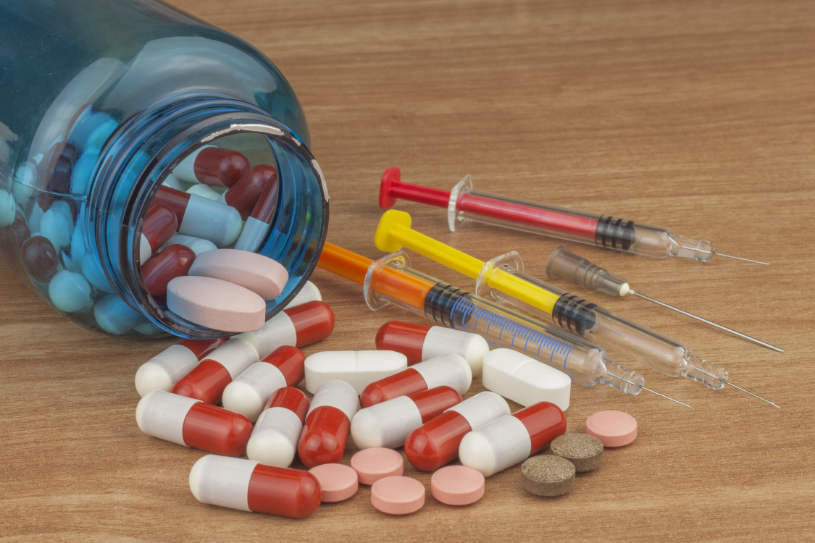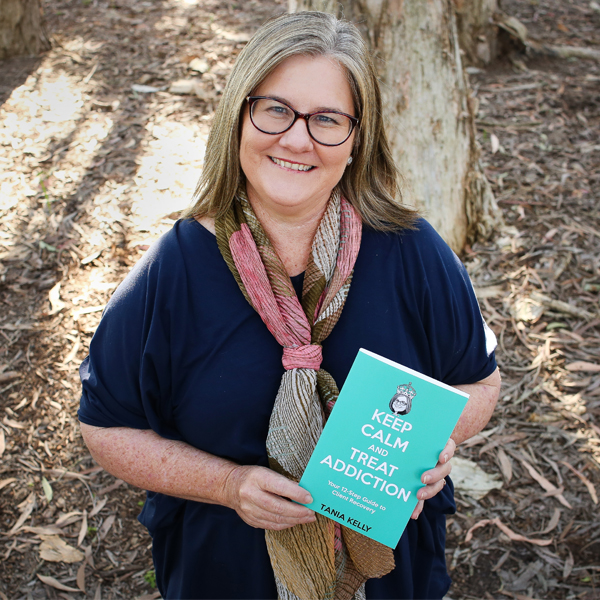
Anabolic steroids, or to use the more correct term anabolic-androgenic steroids (AAS), are a family of hormonal drugs that includes testosterone, the natural male hormone, and numerous synthetic analogues of testosterone. These anabolic-androgenic steroid drugs, as their name suggests, exhibit various degrees of anabolic (muscle building) and androgenic (masculinizing) effects.
Table Of Contents:
Due to these effects, different types of anabolic steroids became a target of misuse by competition bodybuilders, other elite weight training athletes, and elite athletes in other sports. However, in recent decades, the use of AASs has become a major public health concern as a transition of use has occurred and an increasing number of young men, and occasionally even young women, have started using these drugs purely to enhance personal appearance. As such the lifetime prevalence of anabolic-androgenic steroid use worldwide has increased and is estimated to be 1% to 5%. Just in the United States alone, it is estimated that approximately 3 to 4 million Americans have misused AASs to increase muscle mass, both for athletic and cosmetic purposes.
As such, the article will provide information about the prevalence and consequences of anabolic steroid addiction and abuse, and will try to answer questions such as are steroids safe, and whether or not they are legal.
What Are Steroids?
Steroids are a large group of organic hormones that are derived from cholesterol. In humans, there are two endogenous classes of steroid hormones. These are:
- Gonadal or Sex hormones which includes androgens, estrogens, and< progestogens, which have numerous physiologic functions most important of which are the stimulation of the development of secondary sexual characteristics and reproductive functioning in both men and women.
- Corticosteroids, which include glucocorticoids(cortisol) and mineralocorticoids (aldosterone), have a vast array of functions relating to the immune system, metabolism, maintenance of fluid homeostasis, and much more.
Anabolic-androgenic steroids refer to a group of compounds that are structurally similar to the male androgen hormone testosterone and have similar actions when administered as steroid pills or injections. These actions, as mentioned previously, include anabolism (muscle building) and androgenism (masculinization/virilisation).
Anabolic-Androgenic Steroid Drugs Have Several Uses in Medical Treatment:
- For men– hormonal imbalance of hypogonadism, Impotence, Delayed puberty in adolescent boys
- For women– Breast cancer, Endometriosis, Osteoporosis
- Both– Muscle loss in patients with cancer or HIV
However, anabolic steroid addiction and anabolic steroid abuse can also be seen in professional athletes and bodybuilders who wish to enhance their performance and prolong endurance, and in non-athletes who wish to enhance their muscle physique, due to muscle or body dysmorphia. Furthermore, there are numerous types of anabolic steroids that differ by purpose, duration of action and steroids half-life. Some of the drugs may only be used medically, while others can also be misused to enhance performance.

What Are Anabolic-Androgenic Steroids Made Of?
AASs, as mentioned previously, contain either testosterone itself or one of the numerous synthetic analogs/esters of testosterone. Some of the more common synthetic AASs include substances such as testosterone undecanoate, testosterone enanthate, testosterone cypionate, testosterone propionate, and nandrolone esters (tren steroids). Regardless of the specific substance, all AASs help promote growth of skeletal muscle (anabolic effect) and the development of secondary male sexual characteristics (androgenic effect) in both males and females.
Are Anabolic Steroids Legal In The US?
Anabolic medications are classified as Schedule III substances in the United States. It is illegal to possess these drugs without a valid prescription. The Drug Enforcement Administration reports that AASs are illegal due to a high potential for anabolic steroid abuse and destructive effects that steroid drugs may produce when taken without a doctor’s recommendation.
AASs are legal to use if an individual has a prescription for these medications. In many cases, a medical professional will be able to find effective anabolic steroids alternatives that pose fewer health risks and have a lesser potential for steroids withdrawal symptoms. When a patient demonstrates a true need for anabolics, however, they will have access to the medicine. Correspondingly, there are no plausible benefits of lifting the ban on illegal possession of androgenic medications.
Why Do Anabolic Steroids Differ from Other Illegal Drugs?
The major difference between anabolic-androgenic steroids and other illegal drugs that cause dependence and addiction is that they do not affect the mesolimbic dopaminergic system. This means that steroid pills, unlike most other substances of abuse, do not interact with and directly activate the dopaminergic reward and reinforcement system.
Anabolic Steroids Abuse and Addiction Overview
Anabolic steroid abuse is primarily seen in people who want to get a better physique and become more body confident. These medications do not produce euphoria, which makes them unsuitable as recreational drugs, yet their effects can lead to possible anabolic steroid addiction. Consequently, those who start taking steroids for muscle gain might find themselves unable to stop when they reach their goal. As such, recreational use of these substances is considered anabolic steroid abuse and is legally prohibited.
Anabolic Steroid Abuse Statistics
As already mentioned, the prevalence of AAS abuse has increased in the recent decades. The prevalence of anabolic steroid substance abuse is thought to be approximately 6.4% in males and 1.6% in females, and approximately 1-5% in all users worldwide.
The National Institute on Drug Abuse also reports that abuse and subsequent anabolic steroid addiction is predominantly seen in male bodybuilders and weightlifters between the ages of 20 and 30. Furthermore, in 2019 and 2020 the National Institute on Drug Abuse also reported that abuse and addiction of AASs was also a predominant problem in highschool students as well.
Among the various methods of administration, such as steroid pills and direct intramuscular injections, the method of choice for administration for the majority (99.2%) of people were self injections. Furthermore, out of the users that preferred self-injection, as high as 13% reported unsafe practices such as sharing needles, reusing needles, and sharing vials which poses a significant danger to one’s health.
To answer the question “are steroids safe” the answer would be no, since chronic effects of steroids can be fatal.
Who Is Most at Risk of Anabolic Steroid Addiction?
There are certain demographic characteristics that seem to predispose individuals to AAS abuse and anabolic steroid addiction. These factors include:
- Age between 20-30
- Male gender
- Being elite or near-elite athlete, body builder, or weightlifter
- Occupation such as fighters, bouncers, and security personnel
- Suffering from body and/or muscle dysmorphia
- Concomitant substance use disorder involving ecstasy, amphetamines, cocaine and cannabis
- Friends or relatives who are also using AASs
Although these are some of the most common predisposing risk factors for AAS abuse and addiction, it is also important to remember that they may be other unique factors that may also influence an individual to start misusing AASs.

Anabolic Steroids Abuse and Addiction Signs and Symptoms
The signs and symptoms of AAS abuse and addiction are not so straight forward and clearly visible as with other substances of abuse. Rather, signs and symptoms are a result of adverse drug effects that these steroid pills or injections have on hormonal regulation of secondary sexual characteristics.
These Signs and Symptoms Include:
- In Children an indication of AAS misuse might be precocious puberty which refers to an early development puberty with an early growth spurt and secondary sexual characteristics such as facial/pubic/axillary hair and deepening of voice.
- Females may experience hair recession with male pattern baldness, excessive body and facial hair growth, acne, irregular menstrual cycles, breast atrophy, irreversible deepening of the voice, clitoral enlargement, decrease in total body fat and increase in muscle mass
- Males may experience growth in muscle mass and strength but at the same time enlargement of breasts, decrease in size of testicles, infertility with azoospermia which refers to a low sperm count, impotence, and acne.
Risks Of Abusing Anabolic Steroids
Although it is true that anabolic-androgenic steroid drugs do have medical uses, albeit few and very limited, their misuse is fraught with consequences. This is due to the fact that none of these drugs display purely anabolic effects in the absence of androgenic effects. The supraphysiologic doses of androgens contained within anabolic-androgenic steroids interferes with and dysregulates a very delicate and tightly controlled endocrine-gonadal axis in both men and women, which is associated with adverse reproductive, cardiovascular, hepatic, and neuropsychiatric events.
The Use of AAS Is Associated With Several Inherent Risks Associated With Unsafe Use as Well as With Long-Term Consequences of Prolonged AAS Use. These Include:
- Blood-borne infections such as HIV and Hepatitis- from sharing or reusing needles and/or vials. As the most common way of administering AAS is via an intramuscular injection this is a serious concern.
- Use Of Unlicensed Products- One of the main anabolic steroids risks comes from their illegal status. Often, if a person cannot get a prescription, they buy the drugs on the street. The use of unlicensed medicines poses a risk of poisoning.
- Increased Risk Of Developing Cardiovascular Diseases- This class of medications is known to cause dyslipidemia with low serum high-density lipoprotein (HDL), hypertension, increased atherosclerosis, arrhythmias, and hypercoagulability which are all predisposing factors for heart attacks and stroke.
- Increased Risk of Neuropsychiatric Events- Problems with impulse control, aggression, anxiety, and hypomania or mania have been associated with chronic use of AASs. The exact mechanism why these events occur is unknown, but theories suggest that men misusing AASs often have underlying psychiatric disorders such as anxiety and depression, or AASs may directly alter GABAnergic neurosignaling in the brain.
- Increased risk of Hepatotoxicity and Neoplasia- Excessive androgenic stimulation is toxic to the liver and can predispose to hepatic peliosis which refers to benign dilatation of sinusoidal blood-filled spaces within the liver, cholestasis, and various hepatic tumors.
- Various Skin Problems- Continuous anabolics abuse can make oil glands vulnerable to infection. For this reason, androgenic medications frequently cause acne, inflammation of the skin, and swelling.
These are the most common risk and adverse effects that can be associated with anabolic steroid addiction and abuse. As always, there are numerous other risks that may also appear due to steroid interactions that can either be idiosyncratic and rare, information about these risks should be obtained through consultation with a health care provider.
What Makes Steroids Addiction and Abuse so Frequent?
The reasons why AAS addiction and abuse is frequent may be related more to a desire to attain a better physique and to look more physically fit. The desire for looking better is a common problem encountered in today’s society as individuals are frequently exposed to body standards which are unattainable and oftentimes false, leading to self-esteem issues and body dysmorphia. This can be a driving reason for some to seek steroids in order to achieve their desired look.
Can One Overdose On Steroids?
Acute intoxication or overdose with steroids is uncommon, but a state of chronic overdose with chronic misuse can occur. During this state the cumulative misuse of AASs leads to development of those anabolic adverse effects associated with reproductive, cardiovascular, hepatic, dermatologic, and neuropsychiatric symptoms which are discussed in the above section. It may be hard to notice an overdose on steroids due to its slow progression. However, it is vital to get professional help receiving substance abuse treatment as soon as a person notices the first symptoms.
Increased Awareness – Lower Chance Of Steroids Abuse
Anabolic-androgenic steroids are primarily used to treat delayed puberty in males, low testosterone levels and breast cancer. Due to their effects on a person’s body, these drugs are often misused to gain muscle and improve endurance. AAS steroids are classified as Schedule III drugs for their high potential for abuse. Since the use of anabolic medications may result in permanent hormonal changes, it is crucial to avoid taking the drugs without a doctor’s supervision.
For those who use anabolics per their doctor’s prescription, it is important to provide information regarding any concerns the patient might develop. Talking to their healthcare provider if the individual feels like they are becoming addicted to the medication is the best course of action. Those who are abusing anabolics should seek professional treatment at a drug rehabilitation center to increase their chances of full recovery.
Hope Without Commitment
Find the best treatment options. Call our free and confidential helpline
Most private insurances accepted
Find Drug Rehabilitation Centers Near You Anywhere In the US
Addiction Resource team has compiled an extensive list of the top drug rehabilitation facilities around the country. Use our locator tool to find the best centers near you.
Page Sources
- AlShareef S, Gokarakonda SB, Marwaha R. Anabolic Steroid Use Disorder. [Updated 2021 Jul 31]. In: StatPearls [Internet]. Treasure Island (FL): StatPearls Publishing; 2021 Jan-. Available from: https://www.ncbi.nlm.nih.gov/books/NBK538174/
- Anawalt B. D. (2019). Diagnosis and Management of Anabolic Androgenic Steroid Use. The Journal of clinical endocrinology and metabolism, 104(7), 2490–2500. https://doi.org/10.1210/jc.2018-01882
- Baggish, A. L., Weiner, R. B., Kanayama, G., Hudson, J. I., Lu, M. T., Hoffmann, U., & Pope, H. G., Jr (2017). Cardiovascular Toxicity of Illicit Anabolic-Androgenic Steroid Use. Circulation, 135(21), 1991–2002. https://doi.org/10.1161/CIRCULATIONAHA.116.026945
- Delgado BJ, Lopez-Ojeda W. Estrogen. [Updated 2021 Apr 15]. In: StatPearls [Internet]. Treasure Island (FL): StatPearls Publishing; 2021 Jan-. Available from: https://www.ncbi.nlm.nih.gov/books/NBK538260/
- Givens, M. L., & Deuster, P. (2015). Androgens and Androgen Derivatives: Science, Myths, and Theories: Explored From a Special Operations Perspective. Journal of special operations medicine : a peer reviewed journal for SOF medical professionals, 15(3), 98–104.
- Hodgens A, Sharman T. Corticosteroids. [Updated 2021 Jun 29]. In: StatPearls [Internet]. Treasure Island (FL): StatPearls Publishing; 2021 Jan-. Available from: https://www.ncbi.nlm.nih.gov/books/NBK554612/
- Nassar GN, Leslie SW. Physiology, Testosterone. [Updated 2021 Jan 9]. In: StatPearls [Internet]. Treasure Island (FL): StatPearls Publishing; 2021 Jan-. Available from: https://www.ncbi.nlm.nih.gov/books/NBK526128/
- NIDA. 2021, April 12. What are the side effects of anabolic steroid misuse?. https://www.drugabuse.gov/publications/research-reports/steroids-other-appearance-performance-enhancing-drugs-apeds/what-are-side-effects-anabolic-steroid-misuse 2021, October 25
- Onakomaiya, M. M., & Henderson, L. P. (2016). Mad men, women and steroid cocktails: a review of the impact of sex and other factors on anabolic androgenic steroids effects on affective behaviors. Psychopharmacology, 233(4), 549–569. https://doi.org/10.1007/s00213-015-4193-6
- Pope, H. G., Jr, Wood, R. I., Rogol, A., Nyberg, F., Bowers, L., & Bhasin, S. (2014). Adverse health consequences of performance-enhancing drugs: an Endocrine Society scientific statement. Endocrine reviews, 35(3), 341–375. https://doi.org/10.1210/er.2013-1058
- Sagoe, D., Molde, H., Andreassen, C. S., Torsheim, T., & Pallesen, S. (2014). The global epidemiology of anabolic-androgenic steroid use: a meta-analysis and meta-regression analysis. Annals of epidemiology, 24(5), 383–398. https://doi.org/10.1016/j.annepidem.2014.01.009


 Reviewed by:
Reviewed by:  Written by:
Written by: 

 FindTreatment.gov
FindTreatment.gov